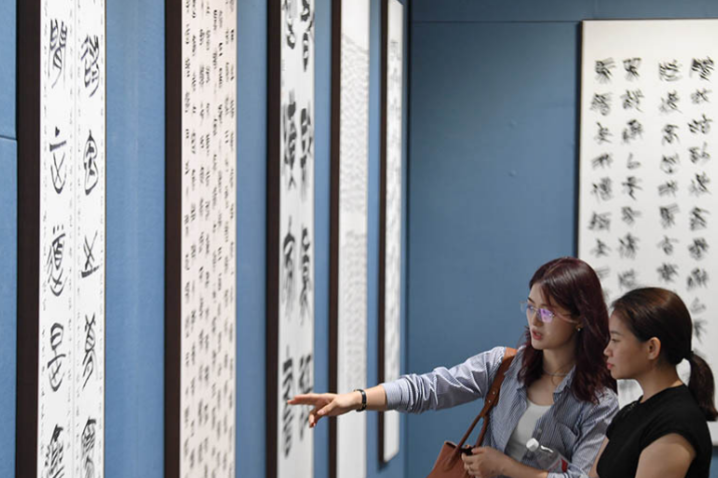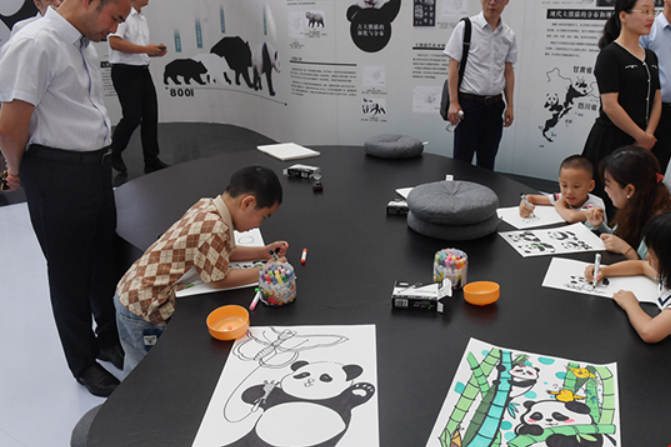A worker works on the hair of a Xuan brush at a local manufacturer in Jingxian County, east China's Anhui Province, June 4, 2020. Ink brushes are used in traditional Chinese painting and calligraphy. Together with ink stone, inkstick and Xuan paper, these four writing implements constitute the "Four Treasures of Study". A highly acclaimed type of ink brush, the Xuan brush is believed to originate in the Qin dynasty (around 200 BC) in Xuanzhou area of ancient China. The hair of the Xuan brush is usually made from the hair of rabbit, weasel or goat, depending on the need of its user, while the handle is typically made of bamboo. The traditional technique of making the Xuan brush, which involves numerous steps, has been listed as a national intangible cultural heritage since 2008. (Xinhua/Zhang Duan) Handles of Xuan brush are seen at a local manufacturer in Jingxian County, east China's Anhui Province, June 5, 2020. Ink brushes are used in traditional Chinese painting and calligraphy. Together with ink stone, inkstick and Xuan paper, these four writing implements constitute the "Four Treasures of Study". A highly acclaimed type of ink brush, the Xuan brush is believed to originate in the Qin dynasty (around 200 BC) in Xuanzhou area of ancient China. The hair of the Xuan brush is usually made from the hair of rabbit, weasel or goat, depending on the need of its user, while the handle is typically made of bamboo. The traditional technique of making the Xuan brush, which involves numerous steps, has been listed as a national intangible cultural heritage since 2008. (Xinhua/Han Xiaoyu) A woman works on the hairs for Xuan brush at a local manufacturer in Jingxian County, east China's Anhui Province, June 4, 2020. Ink brushes are used in traditional Chinese painting and calligraphy. Together with ink stone, inkstick and Xuan paper, these four writing implements constitute the "Four Treasures of Study". A highly acclaimed type of ink brush, the Xuan brush is believed to originate in the Qin dynasty (around 200 BC) in Xuanzhou area of ancient China. The hair of the Xuan brush is usually made from the hair of rabbit, weasel or goat, depending on the need of its user, while the handle is typically made of bamboo. The traditional technique of making the Xuan brush, which involves numerous steps, has been listed as a national intangible cultural heritage since 2008. (Xinhua/Zhang Duan) A worker combs hairs of Xuan brush at a local manufacturer in Jingxian County, east China's Anhui Province, June 4, 2020. Ink brushes are used in traditional Chinese painting and calligraphy. Together with ink stone, inkstick and Xuan paper, these four writing implements constitute the "Four Treasures of Study". A highly acclaimed type of ink brush, the Xuan brush is believed to originate in the Qin dynasty (around 200 BC) in Xuanzhou area of ancient China. The hair of the Xuan brush is usually made from the hair of rabbit, weasel or goat, depending on the need of its user, while the handle is typically made of bamboo. The traditional technique of making the Xuan brush, which involves numerous steps, has been listed as a national intangible cultural heritage since 2008. (Xinhua/Liu Junxi) A tourist visits a showroom of a local Xuan brush manufacturer in Jingxian County, east China's Anhui Province, June 4, 2020. Ink brushes are used in traditional Chinese painting and calligraphy. Together with ink stone, inkstick and Xuan paper, these four writing implements constitute the "Four Treasures of Study". A highly acclaimed type of ink brush, the Xuan brush is believed to originate in the Qin dynasty (around 200 BC) in Xuanzhou area of ancient China. The hair of the Xuan brush is usually made from the hair of rabbit, weasel or goat, depending on the need of its user, while the handle is typically made of bamboo. The traditional technique of making the Xuan brush, which involves numerous steps, has been listed as a national intangible cultural heritage since 2008. (Xinhua/Han Xiaoyu) A worker combs hairs of Xuan brush at a local manufacturer in Jingxian County, east China's Anhui Province, June 4, 2020. Ink brushes are used in traditional Chinese painting and calligraphy. Together with ink stone, inkstick and Xuan paper, these four writing implements constitute the "Four Treasures of Study". A highly acclaimed type of ink brush, the Xuan brush is believed to originate in the Qin dynasty (around 200 BC) in Xuanzhou area of ancient China. The hair of the Xuan brush is usually made from the hair of rabbit, weasel or goat, depending on the need of its user, while the handle is typically made of bamboo. The traditional technique of making the Xuan brush, which involves numerous steps, has been listed as a national intangible cultural heritage since 2008. (Xinhua/Zhang Duan) A worker adjusts hairs of Xuan brush at a local manufacturer in Jingxian County, east China's Anhui Province, June 4, 2020. Ink brushes are used in traditional Chinese painting and calligraphy. Together with ink stone, inkstick and Xuan paper, these four writing implements constitute the "Four Treasures of Study". A highly acclaimed type of ink brush, the Xuan brush is believed to originate in the Qin dynasty (around 200 BC) in Xuanzhou area of ancient China. The hair of the Xuan brush is usually made from the hair of rabbit, weasel or goat, depending on the need of its user, while the handle is typically made of bamboo. The traditional technique of making the Xuan brush, which involves numerous steps, has been listed as a national intangible cultural heritage since 2008. (Xinhua/Han Xiaoyu) She Zhengjun, an inheritor of the traditional technique of making Xuan brush, works on the handle of a Xuan brush at a workshop in Jingxian County, east China's Anhui Province, June 5, 2020. Ink brushes are used in traditional Chinese painting and calligraphy. Together with ink stone, inkstick and Xuan paper, these four writing implements constitute the "Four Treasures of Study". A highly acclaimed type of ink brush, the Xuan brush is believed to originate in the Qin dynasty (around 200 BC) in Xuanzhou area of ancient China. The hair of the Xuan brush is usually made from the hair of rabbit, weasel or goat, depending on the need of its user, while the handle is typically made of bamboo. The traditional technique of making the Xuan brush, which involves numerous steps, has been listed as a national intangible cultural heritage since 2008. (Xinhua/Zhang Duan) She Zhengjun, an inheritor of the traditional technique of making Xuan brush, shows a Xuan brush he makes at a workshop in Jingxian County, east China's Anhui Province, June 5, 2020. Ink brushes are used in traditional Chinese painting and calligraphy. Together with ink stone, inkstick and Xuan paper, these four writing implements constitute the "Four Treasures of Study". A highly acclaimed type of ink brush, the Xuan brush is believed to originate in the Qin dynasty (around 200 BC) in Xuanzhou area of ancient China. The hair of the Xuan brush is usually made from the hair of rabbit, weasel or goat, depending on the need of its user, while the handle is typically made of bamboo. The traditional technique of making the Xuan brush, which involves numerous steps, has been listed as a national intangible cultural heritage since 2008. (Xinhua/Han Xiaoyu) A worker packs finished Xuan brushes at a local manufacturer in Jingxian County, east China's Anhui Province, June 4, 2020. Ink brushes are used in traditional Chinese painting and calligraphy. Together with ink stone, inkstick and Xuan paper, these four writing implements constitute the "Four Treasures of Study". A highly acclaimed type of ink brush, the Xuan brush is believed to originate in the Qin dynasty (around 200 BC) in Xuanzhou area of ancient China. The hair of the Xuan brush is usually made from the hair of rabbit, weasel or goat, depending on the need of its user, while the handle is typically made of bamboo. The traditional technique of making the Xuan brush, which involves numerous steps, has been listed as a national intangible cultural heritage since 2008. (Xinhua/Han Xiaoyu) A worker adjusts hairs for Xuan brush at a local manufacturer in Jingxian County, east China's Anhui Province, June 4, 2020. Ink brushes are used in traditional Chinese painting and calligraphy. Together with ink stone, inkstick and Xuan paper, these four writing implements constitute the "Four Treasures of Study". A highly acclaimed type of ink brush, the Xuan brush is believed to originate in the Qin dynasty (around 200 BC) in Xuanzhou area of ancient China. The hair of the Xuan brush is usually made from the hair of rabbit, weasel or goat, depending on the need of its user, while the handle is typically made of bamboo. The traditional technique of making the Xuan brush, which involves numerous steps, has been listed as a national intangible cultural heritage since 2008. (Xinhua/Han Xiaoyu) A worker adjusts hairs of Xuan brush at a local manufacturer in Jingxian County, east China's Anhui Province, June 4, 2020. Ink brushes are used in traditional Chinese painting and calligraphy. Together with ink stone, inkstick and Xuan paper, these four writing implements constitute the "Four Treasures of Study". A highly acclaimed type of ink brush, the Xuan brush is believed to originate in the Qin dynasty (around 200 BC) in Xuanzhou area of ancient China. The hair of the Xuan brush is usually made from the hair of rabbit, weasel or goat, depending on the need of its user, while the handle is typically made of bamboo. The traditional technique of making the Xuan brush, which involves numerous steps, has been listed as a national intangible cultural heritage since 2008. (Xinhua/Liu Junxi) Workers make Xuan brushes at a workshop in Jingxian County, east China's Anhui Province, June 5, 2020. Ink brushes are used in traditional Chinese painting and calligraphy. Together with ink stone, inkstick and Xuan paper, these four writing implements constitute the "Four Treasures of Study". A highly acclaimed type of ink brush, the Xuan brush is believed to originate in the Qin dynasty (around 200 BC) in Xuanzhou area of ancient China. The hair of the Xuan brush is usually made from the hair of rabbit, weasel or goat, depending on the need of its user, while the handle is typically made of bamboo. The traditional technique of making the Xuan brush, which involves numerous steps, has been listed as a national intangible cultural heritage since 2008. (Xinhua/Liu Junxi)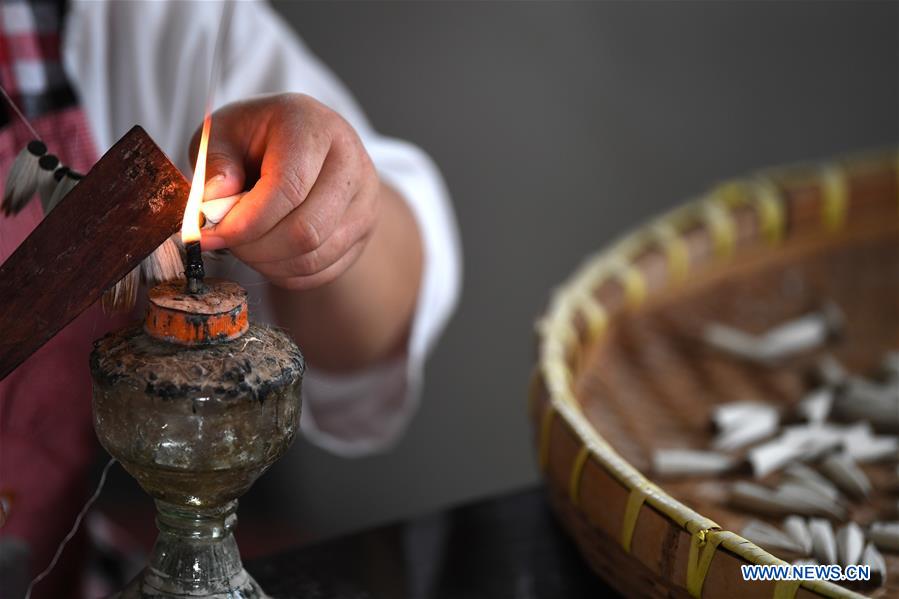
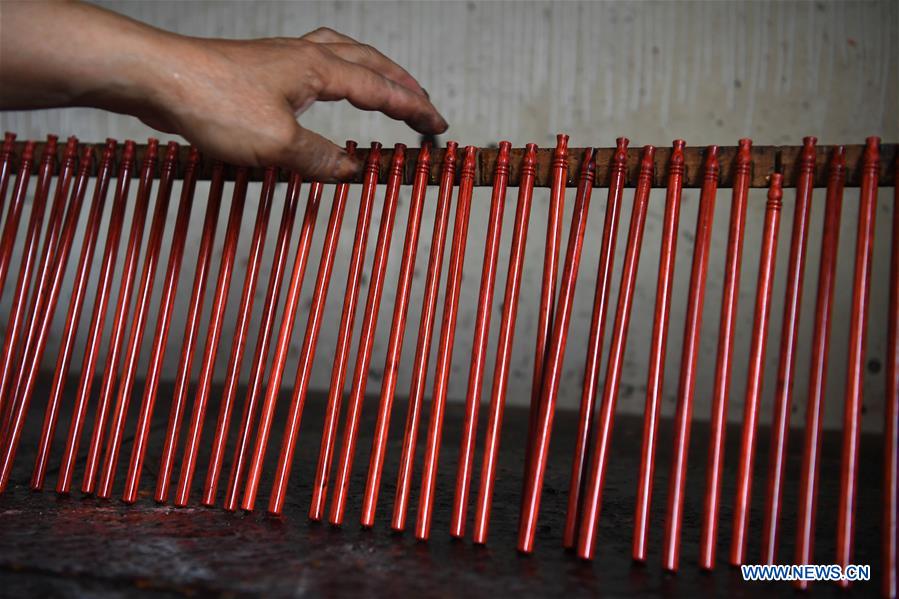
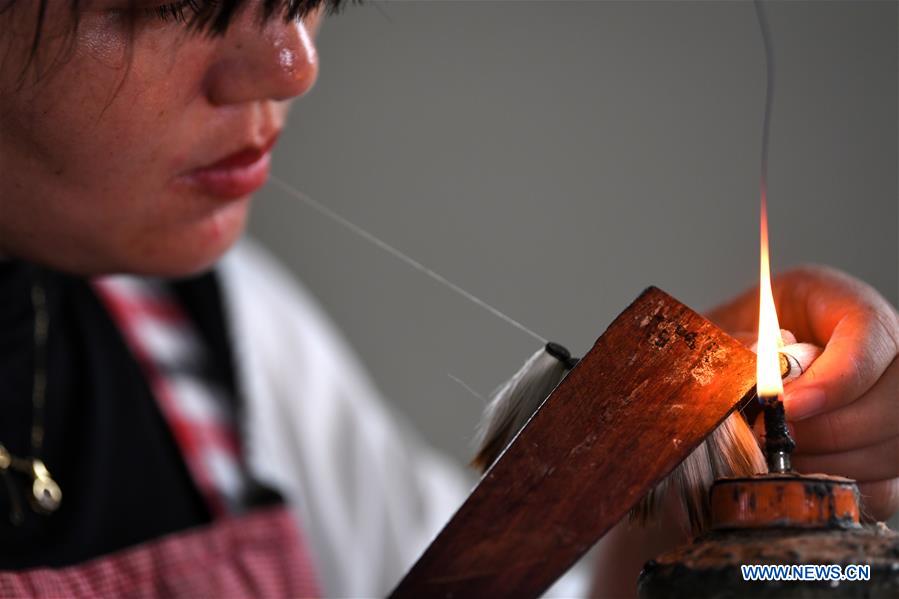
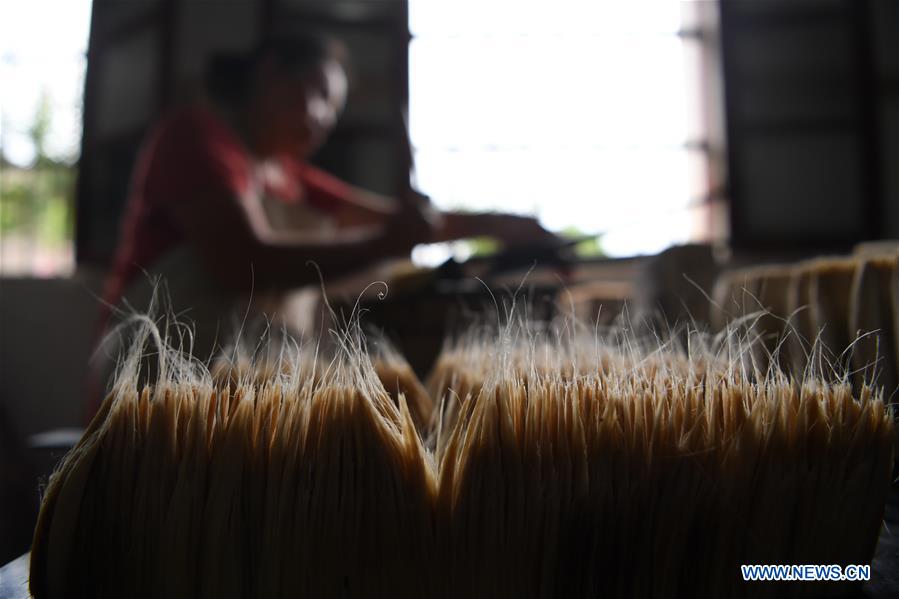
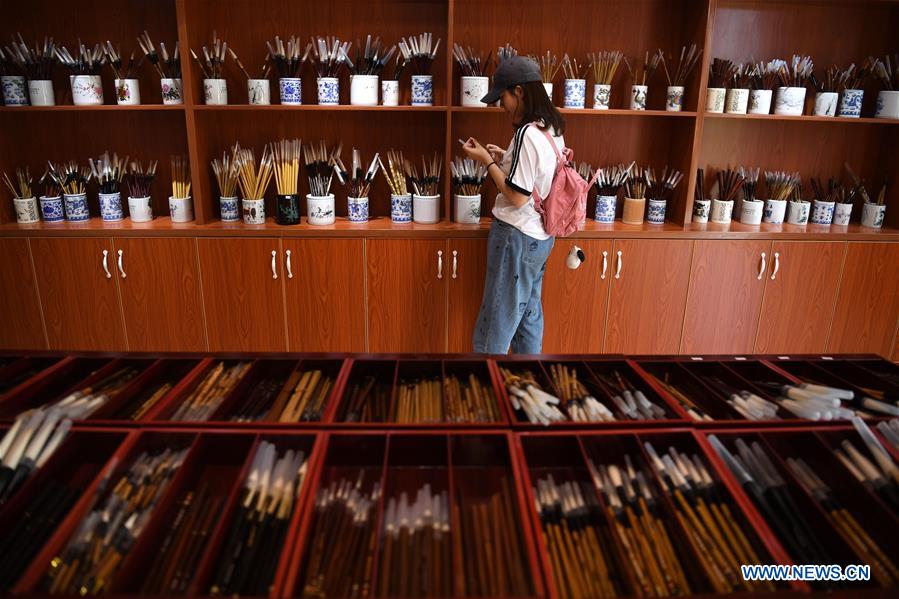

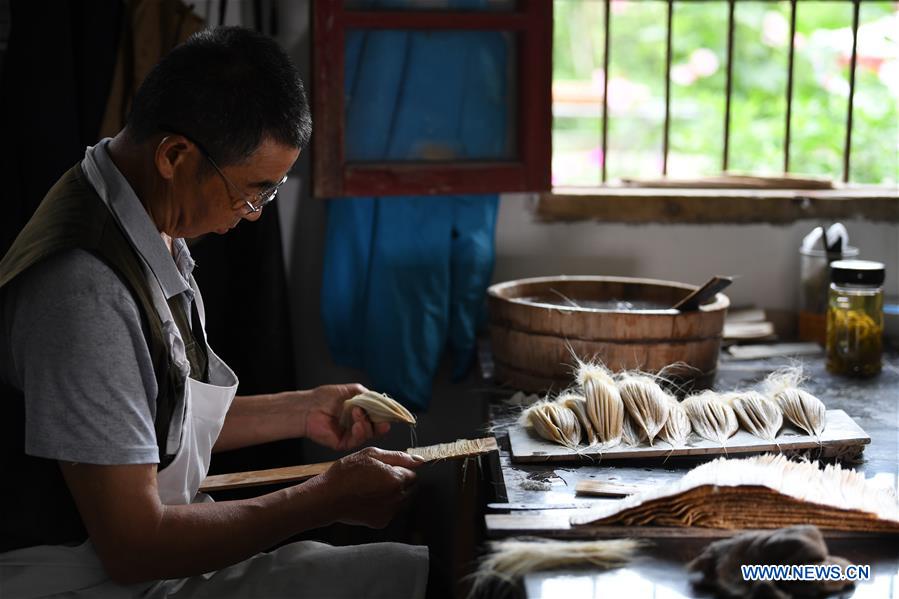
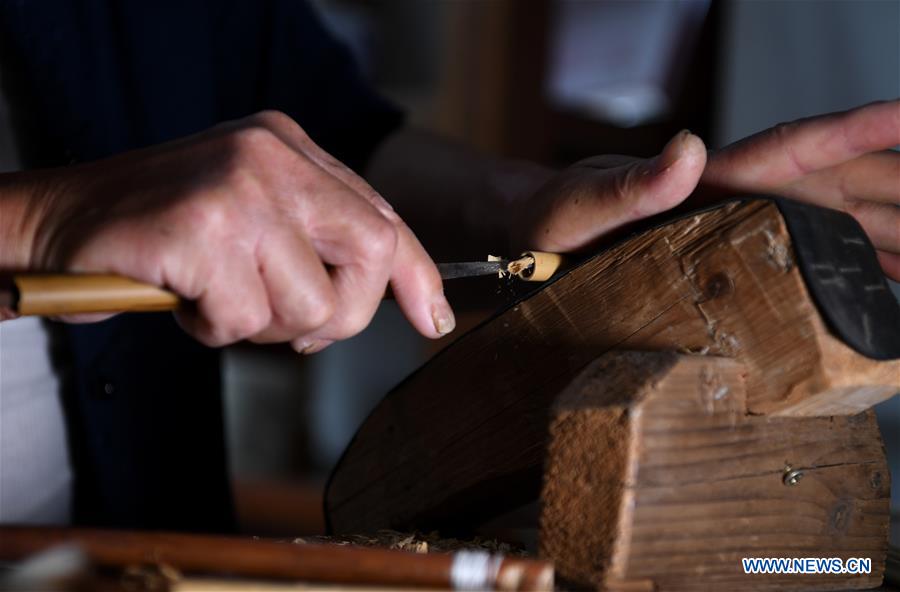
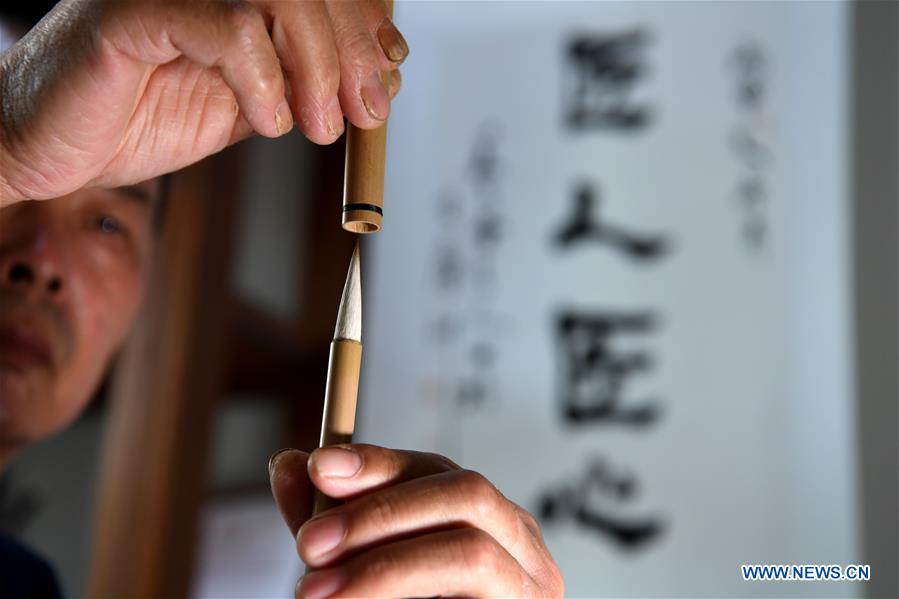
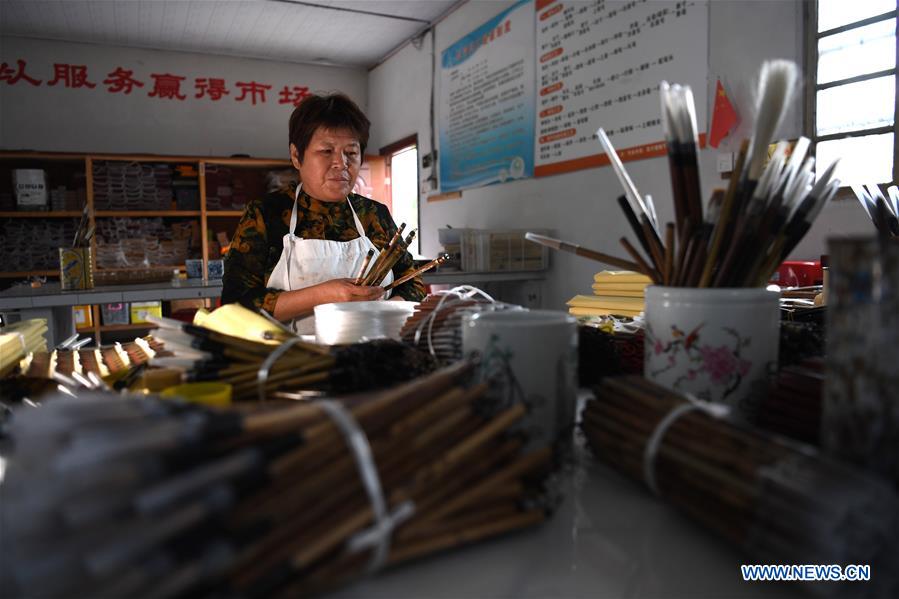
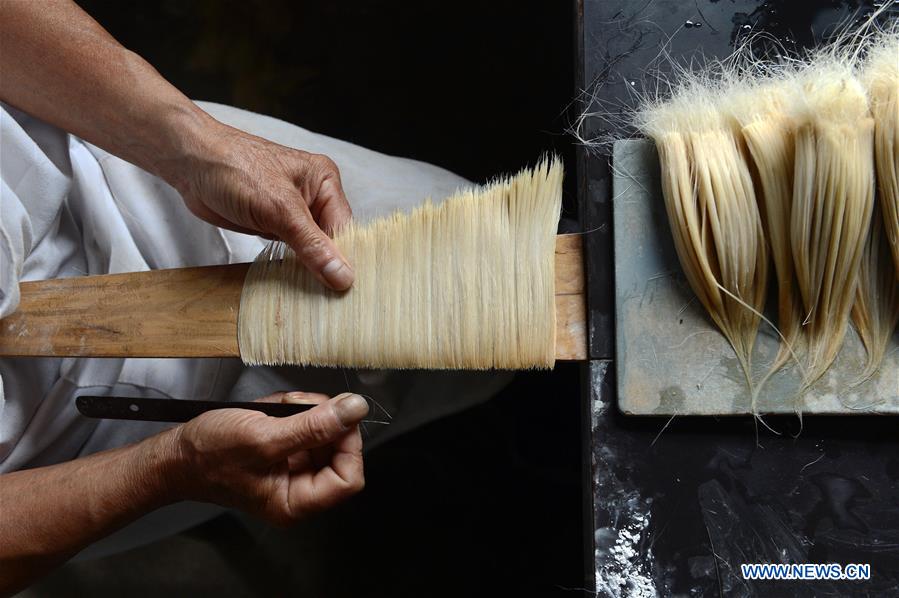
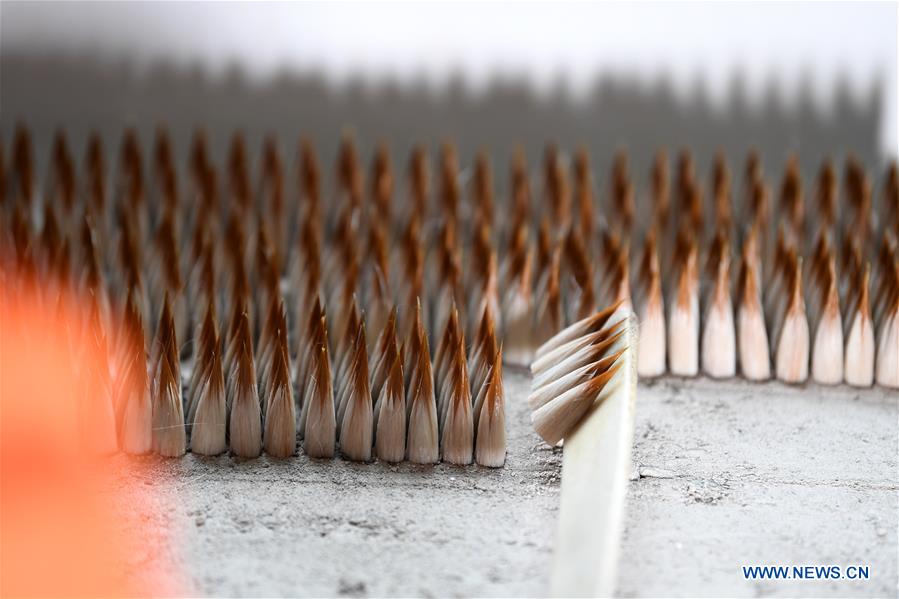
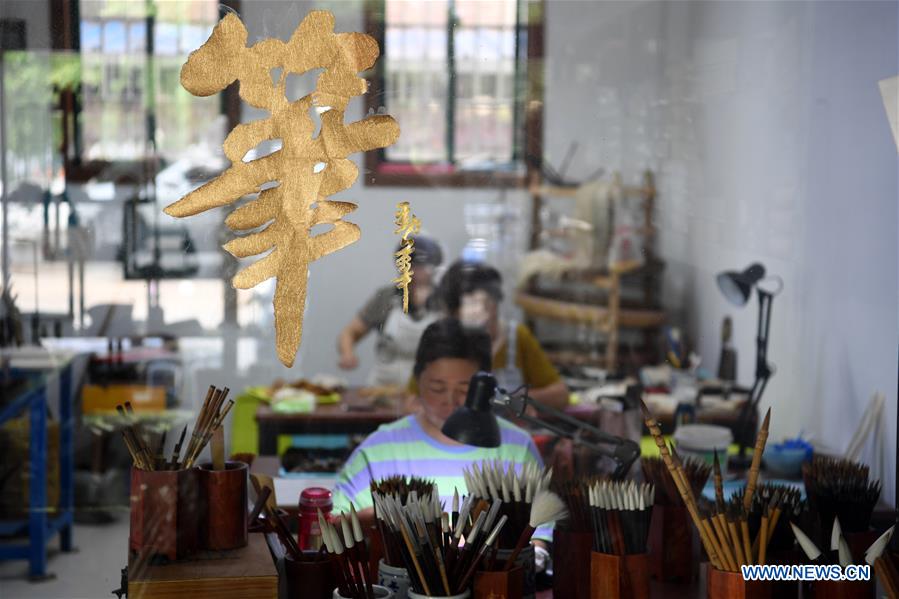
Traditional tech of making Xuan brush, national intangible cultural heritage
Editor:李苏璇
Source:Xinhua.com
Updated:2020-06-18 17:08:03
Source:Xinhua.com
Updated:2020-06-18 17:08:03
Special
Contact
Welcome to English Channel! Any suggestion, welcome.Tel:0731-82965627
lisl@rednet.cn
zhouqian@rednet.cn



